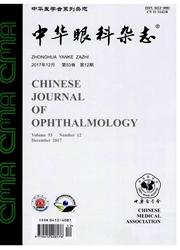

 中文摘要:
中文摘要:
目的探讨以异种角膜脱细胞基质为载体,体外构建生物角膜的可能性和方法。方法应用去垢剂1%TritonX-100冷冻干燥处理制备猪角膜脱细胞基质载体,在其上皮面和内皮面分别接种兔角膜上皮细胞和内皮细胞,体外培养2周。将复合物制成组织切片,在光镜下观察组织形态(HE染色),采用免疫组织化学方法检测角膜上皮特异性细胞角蛋白3(CK3),使用锥虫蓝联合茜素红染色观察内皮细胞,在扫描电镜下观察上皮面和内皮面的超微结构。结果体外培养生物角膜获得上皮、无细胞基质和内皮三层复合结构。4或5层复层上皮中以扁平细胞为主,胞质内特异性CK3表达阳性;内皮层为一连续的单层扁平细胞,细胞活性良好,锥虫蓝联合茜素红染色显示组织呈典型的蜂巢样镶嵌结构。扫描电镜下观察,在载体的上皮面细胞呈复层样生长,形态近似扁平与梭形之间;内皮面为多边形单层细胞,表面具有微绒毛结构。结论构建的生物角膜为上皮一脱细胞基质载体一内皮复合物,初具角膜的雏形结构。异种角膜脱细胞基质提供了良好的细胞生长界面,有望成为体外构建角膜的载体材料。
 英文摘要:
英文摘要:
Objective To investigate the method and feasibility of constructing biological cornea by culturing corneal epithelial and endothelial cells on the scaffold of xenogenic corneal acellular matrix (XCAM) in vitro. Methods Porcine cornea was prepared as XCAM by application of detergent 1% TritonX-100 and freeze-drying process. After the cartier has rehydrated, rabbit epithelial and endothelial cells were seeded on each side of XCAM. After 2 weeks of culture, the reconstructed tissue of epitheliumscaffold-endothelium compound was examined by histological studies by HE staining and scanning electron microscope (SEM). The epithelium was examined by immunohistochemical studies using antibodies to cytokeratin (CK3), and the endothelium was stained with trypan blue and alizarin red. Results Reconstructed biological cornea was composed of epithelium, acellular stroma and endothelium. Four to five layers of stratified flat cells were formed on the surface of XCAM, which were stained positively by CK3. Continuous monolayer cells located on the endothelial side, which were alive and showed honeycomb-like shape via dual staining with trypan blue and alizarin red, cells arranged tightly. Under SEM, epithelial cells showed several layers with the morphology of flat and spindle cells alternatively, endothelial cells showed polygonal shape with microvillus over the surface. Conclusions The biological corneal tissue reconstructed in vitro possessed three layers: the epithelium, scaffold and the endothelium. XCAM provides ideal surface for corneal epithelial and endothelial cells' adhesion and proliferation, it is desired to be used as scaffold for reconstruction of cornea in vitro.
 同期刊论文项目
同期刊论文项目
 同项目期刊论文
同项目期刊论文
 期刊信息
期刊信息
